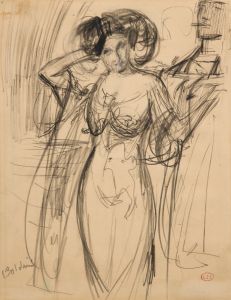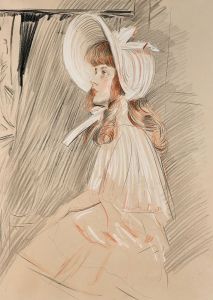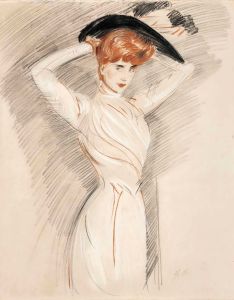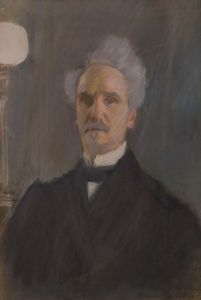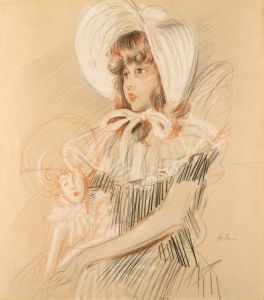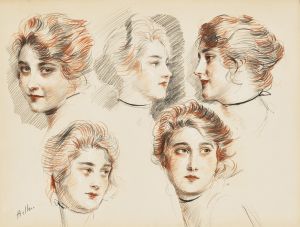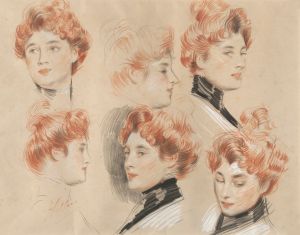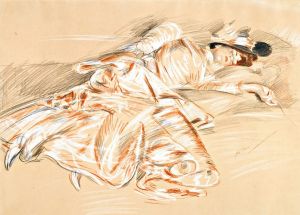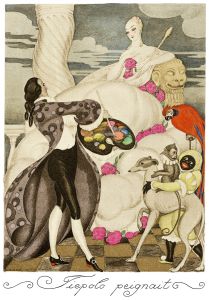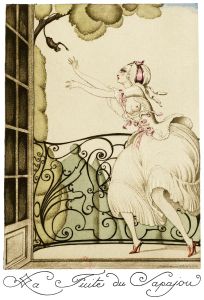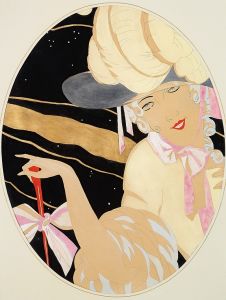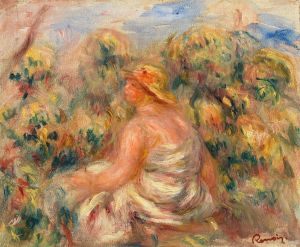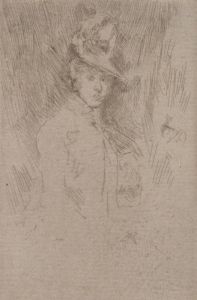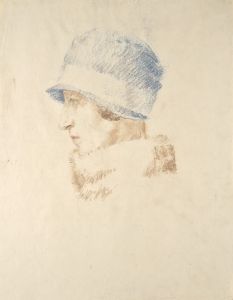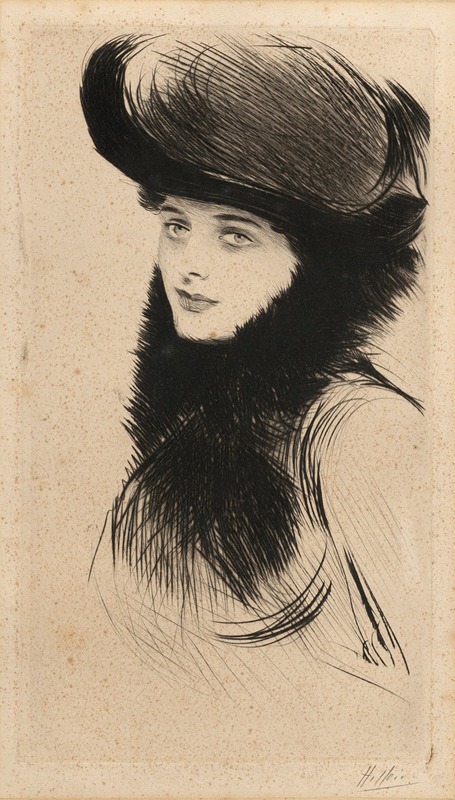
Portrait de femme au chapeau
A hand-painted replica of Paul César Helleu’s masterpiece Portrait de femme au chapeau, meticulously crafted by professional artists to capture the true essence of the original. Each piece is created with museum-quality canvas and rare mineral pigments, carefully painted by experienced artists with delicate brushstrokes and rich, layered colors to perfectly recreate the texture of the original artwork. Unlike machine-printed reproductions, this hand-painted version brings the painting to life, infused with the artist’s emotions and skill in every stroke. Whether for personal collection or home decoration, it instantly elevates the artistic atmosphere of any space.
Paul César Helleu was a renowned French artist known for his portraits of society women during the Belle Époque period. One of his notable works is "Portrait de femme au chapeau," which exemplifies his skill in capturing the elegance and grace of his subjects. Helleu's work is characterized by its delicate lines and the use of pastels, which lend a soft and refined quality to his portraits.
"Portrait de femme au chapeau" showcases Helleu's mastery in portraying the fashionable women of his time. The painting features a woman wearing a stylish hat, a common accessory in the late 19th and early 20th centuries, which often symbolized social status and sophistication. Helleu's attention to detail is evident in the intricate rendering of the hat and the subtle expression on the woman's face, capturing both her poise and personality.
Helleu was part of the Impressionist movement, and his work often reflects the influence of his contemporaries, such as John Singer Sargent and James McNeill Whistler. However, Helleu developed his own distinctive style, focusing on the elegance and charm of his subjects rather than the broader themes often explored by other Impressionists. His portraits were highly sought after by the Parisian elite, and he became a favorite among high society for his ability to depict the refined beauty of his sitters.
The artist's technique involved the use of drypoint, a printmaking process that allowed him to create fine lines and delicate textures. This method was particularly effective in conveying the intricate details of fashion and the subtle nuances of facial expressions. Helleu's portraits often feature a limited color palette, emphasizing the contrast between light and shadow to create depth and dimension.
"Portrait de femme au chapeau" is a testament to Helleu's ability to capture the zeitgeist of the Belle Époque, a period marked by cultural flourishing and artistic innovation. His work provides a glimpse into the world of the Parisian elite, highlighting the fashion and social dynamics of the time. The painting not only reflects the aesthetic values of the era but also serves as a historical document, preserving the image of a society that was on the brink of transformation with the advent of the 20th century.
Helleu's legacy extends beyond his portraits; he was also a friend and collaborator of several prominent artists of his time, including Claude Monet and Edgar Degas. His influence can be seen in the works of later artists who sought to capture the elegance and sophistication of their subjects in a similar manner.
Today, "Portrait de femme au chapeau" and other works by Helleu are appreciated for their artistic merit and historical significance. They continue to be exhibited in museums and galleries, offering viewers a window into the past and the opportunity to appreciate the timeless beauty of Helleu's art.





